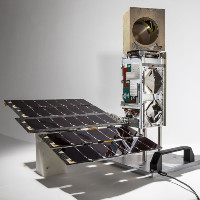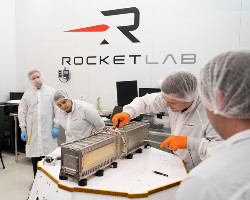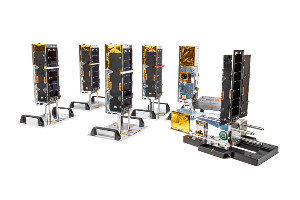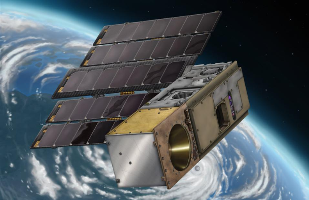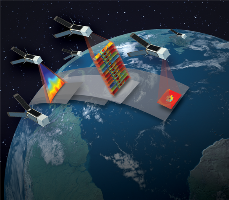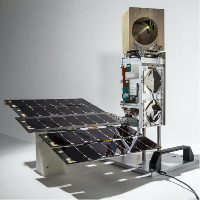| Satellite | TROPICS (The Time-Resolved Observations of Precipitation structure and storm Intensity with a Constellation of Smallsats) |
|---|---|
| Form factor | CubeSat |
| Units or mass | 3U |
| Entity name | MIT (Massachusetts Institute of Technology) |
| Institution | University |
| Entity | Academic / Education |
| Headquarters | US |
| Manufacturer | AIVT by Blue Canyon |
| Launch brokerer | Astra |
| Partners | NOAA, University of Wisconsin, University of Miami, Blue Canyon, NASA Goddard Space Flight Center |
| Oneliner |
Provide rapid-refresh microwave measurements over the tropics for weather prediction. |
| Description |
Provide rapid-refresh microwave measurements (21 minutes for the baseline mission, 31 minutes for the threshold mission) over the tropics that can be used to observe the thermodynamics of the troposphere and precipitation structure for storm systems at the mesoscale and synoptic scale over the entire storm lifecycle. Radiometer scanning across the satellite track at 30 RPM to provide temperature profiles using 7 channels near 118.75 GHz oxygen absorption line, water vapor profiles using 3 channels near the 183 GHz water vapor absorption line, imagery in a single channel near 90 GHz for precipitation measurements, and a single channel at 206 GHz for cloud ice measurements. The antenna listens in at 12 microwave channels between 90 to 205 gigahertz, where the relevant emission signals are strongest. These channels capture signals at different heights throughout the lowest layer of the atmosphere, or troposphere, where most weather we experience occurs. |
| Results | |
| Sources | [1] [2] [3] [4] [5] [6] [7] [8] [9] |
| Photo sources | [1] [2] [3] [4] [5] [6] |
| COTS subsystems |
|
| Subsystems sources | [1] |
| Keywords | Steerable Solar Arrays |
Related Spacecraft
| Spacecraft | Status | Launcher | Launch | Orbit |
|---|---|---|---|---|
| TROPICS Pathfinder (The Time-Resolved Observations of Precipitation structure and storm Intensity with a Constellation of Smallsats) | Reentry 2024-07-26. Was operational? (Yielded useful data for 30+ months of operation (up until December 2023 as per 4S 2024 paper) | Falcon 9, (Transporter-2) | 2021-06-30 | 525 km, 97.5 deg |
| TROPICS 1 (The Time-Resolved Observations of Precipitation structure and storm Intensity with a Constellation of Smallsats) | Launch failure | Astra Rocket | 2022-06-12 | Launch failure |
| TROPICS 2 (The Time-Resolved Observations of Precipitation structure and storm Intensity with a Constellation of Smallsats) | Launch failure | Astra Rocket | 2022-06-12 | Launch failure |
| TROPICS 5 (TROPICS-05, TROPICS SV05, The Time-Resolved Observations of Precipitation structure and storm Intensity with a Constellation of Smallsats) | Operational (4S 2024 paper) | Electron | 2023-05-08 | 540 km, 32.7 deg |
| TROPICS 6 (TROPICS-06, TROPICS SV06, The Time-Resolved Observations of Precipitation structure and storm Intensity with a Constellation of Smallsats) | Operational (4S 2024 paper) | Electron | 2023-05-08 | 540 km, 32.7 deg |
| TROPICS 3 (TROPICS-03, TROPICS SV03, The Time-Resolved Observations of Precipitation structure and storm Intensity with a Constellation of Smallsats) | Operational (4S 2024 paper) | Electron | 2023-05-26 | 540 km, 32.7 deg |
| TROPICS 7 (TROPICS-07, TROPICS SV07, The Time-Resolved Observations of Precipitation structure and storm Intensity with a Constellation of Smallsats) | Operational (4S 2024 paper) | Electron | 2023-05-26 | 540 km, 32.7 deg |
Last modified: 2024-12-15
